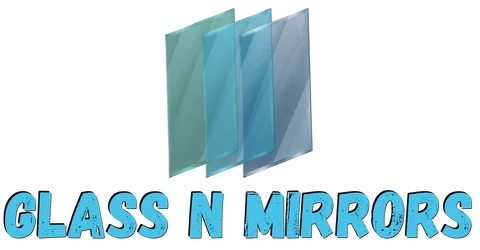If you’ve ever gotten bored in front of a mirror, you might have started pulling funny faces at yourself. Most people can admit that they’ve done something weird in the mirror. However, very few of them start having philosophical questions regarding reflection and visibility. Still, it’s not uncommon for people to wonder if they can move faster than their reflection. Do mirrors have a delay?
Mirrors have a delay that cannot be detected by human perception. The human brain processes motion at 60 flashes per second. For a mirror to have any noticeable delay, it must be over 4,000 miles away from the human observer. That said, people report witnessing choppy motion after being inebriated.
In this article, I’m going to cover different factors affecting lag, including speedy subject, slower medium, and observation. Mirrors have technical lag, which is why we will also go over that concept and discuss how much of a delay mirrors have. By the end, you will not only understand mirror lag but will also have an interesting conversation snippet for parties.

Table of Contents
- 1 Can You See Delay In A Mirror?
- 2 Do Mirrors Have Lag?
- 3 Are Reflections Instant?
- 4 What Is Mirror Lag?
- 5 Factors That Affect Mirror Lag
- 6 Final Thoughts – Do Mirrors Have a Delay?
- 7 What Is A Vanity Mirror – And Which One You Should Pick
- 8 How Do Mirrors Affect WiFi? And How To Boost Signals
- 9 Do Mirrors Have Any Delay?
Can You See Delay In A Mirror?
Being on drugs is conveyed with choppy motion in movies. The idea most directors try to communicate there is that drugs alter perception to the point where motion isn’t detected properly. This is a sign of the brain losing optimum functionality. At its best, the human brain takes 60 images per second to perceive motion. To actually see a delay, you’d need to process 59 images or less per second.
You can see a delay in a mirror if you’re under the influence of certain drugs or have suffered from brain damage. As a healthy human of any age or gender, you should not be seeing a delay in your mirror because the speed of light and human perception is instantaneous to the average observer.
If you’re sober as far as you know but are experiencing choppy motion or noticeable lag in the mirror or in real life, you should seek emergency medical support immediately. If someone you know reports witnessing a delay in the mirror, they might suffer from one of the following medical complications.
- Head injury – Have they hit their head recently or had a concussion?
- Stroke – Ask them to try to smile or raise both arms.
- Brain inflammation or tumor – This is detected with an MRI, which is recommended by a medical specialist.
- Multiple sclerosis – A general practitioner can recommend an MRI to test for this.
Hopefully, none of the above applies to you or someone you care about. It also helps to check whether the person reporting delayed motion perception has been taking new medication. Certain medicines can cause choppy vision or blurred perception that can be perceived as lag. Anti-seizure drugs, as well as medicine that contains lithium, can have this effect. Report the symptoms to the prescribing doctor to get your medical prescription upgraded to less impactful drugs.
Do mirrors make you look bigger? I reveal the truth in my article.
Do Mirrors Have Lag?
The reason we conclude the problem to be with the observer is that the medium and the subject cannot be blamed for the lag. The subject is the person or object that is moving and is being seen in the mirror. There is no way for something to move fast enough to create a lag in human perception. This is explained further in the “factors that affect lag” section of this post. Light is always the medium of reflection in a mirror.
Mirrors have a lag so small that it cannot be perceived by a human because humans cannot perceive faster than the speed of light, which is the medium of reflection. For observable lag, you have to send a mirror 1/60th of a light second away and observe it with a telescope.
Given that we do not look at a mirror under those conditions, we shouldn’t be able to witness a delay in a mirror. Again, if you or someone you care about is seeing lag in the mirror, you should treat it as a medical emergency because reflections are faster than healthy perception.
Are Reflections Instant?
While reflections seem instant, their speed is worth investigating. In a world where we could see everything clearly, we would be able to see the features of people on a rollercoaster or read signs from the window of a fast-moving vehicle. Reflections aren’t as simple as we make them out to be.
Reflections are not instant though they seem so. Reflections travel at light speed but can often travel twice as long. Since human observation is a few thousand times slower than light, it can feel like reflections are instant despite being two times slower than direct perception.
Let’s suppose you witness your own reflection in a mirror. The light has to hit you and go to the mirror, then reflect back, traveling the same distance to reach you. This takes longer than seeing the mirror frame since light just has to travel once from the mirror to you. The difference between the length of time is so minute that you cannot even notice it.
Mirrors can reflect UV light? True or False? Check out my article for a full run down.
Light travels at 186,000 miles per second. That means that to notice a second’s difference in your reflection, you would have to be 186,000 miles away from a mirror. Then, you would witness the mirror in a second, but the light that would travel from you to the mirror and return to you would have to travel 372,000 miles, which would take two seconds.

What Is Mirror Lag?
Now that you know that lag should be impossible to observe in a mirror, wouldn’t it be cool to actually produce mirror lag? It turns out that you can convince people that they’re witnessing lag in a mirror even though it is theoretically not possible to slow down light to any observable extent.
Mirror lag is the illusion of delay that occurs when reflecting light off of two or more mirrors placed at a significant distance. This isn’t actual lag but is simply a break in the launch of light caught on a distant mirror. In technical terms, this is subject lag, not medium lag.
To clarify this further, let’s look at what each type of lag entails.
Factors That Affect Mirror Lag
Nominal lag is often dismissed because it cannot be detected. From video games to live streaming, the biggest problem with lag is that it is noticeable. The more you’re aware of a lag, the more annoying it gets. It is, therefore, crucial to know the factors that emphasize lag or diminish it.
The Subject
When a subject moves faster than it can be detected, there’s lag. The lag update in this context involves catching up with the subject’s position. In samurai movies, there’s a trope of the lightning-fast swordsman. The samurai moves faster than his opponent can detect and slashes them before anyone can even see the swordsmen remove his weapon from its sheath.
Knowing the speed of light and the maximum recorded speed of humans, we can safely conclude that such scenarios are not possible in real life. Just like a human cannot move faster than another’s eye can detect, you cannot move faster than your eye can detect in the mirror. Subject lack doesn’t occur in a mirror.
The Medium
When you detect information, it comes across a medium. Let’s suppose you’re playing a video game. The light that bounces off a screen is much faster’s than the game’s processing rate. In other words, it should be impossible for there to be a lag between the screen and your perception.
Well, there is no lag in that part of visual communication. Light is the perfect medium to convey visual information, which is why whatever’s on your screen can be seen by you instantly. However, the electric signals that update the monitor visuals on display can slow down. This is where you experience gameplay lag.
Even in the case of live streaming, everything that hits the display can be instantly perceived via traveling light. However, the lag occurs in the electric signals reaching the device. In both cases, the medium responsible for the lag isn’t light because there’s no noticeable lag whenever visual information is being communicated by light.
In the case of mirrors, there is no electric signal involved. 100% of the visual communication depends on the reflection of light, which is why there’s no medium lag in mirrors. The only way to produce noticeable lag with a mirror is to be on a Zoom call with your mirror over a poor internet connection. That way, you introduce a medium other than light, which results in lag.
Do you look shorter in a mirror? See this to find out the truth!
The Detection
The final component of perception is the perceiver. The reason this isn’t discussed often as a lag contributor is that human perception of visual signals is more or less the same. While professional boxers and martial artists train their response system to react quickly to visual queues, they too see the world at the same pace as you and I.
In contrast, flies see the world in slow motion. If you’ve watched a video, you’ve merely gone through a slide of images that move at 60 frames per second. This is why movies are called “motion pictures.” When images move at 60 frames per second, they seem animated because the human brain detects 60 flashes per second.
This is more than enough to detect the visual signals around us. A fly perceives 250 flashes per second which means it can see our movements in slow motion and respond quicker. Only when you attempt to swat a fly do you experience real-life detection lag. Aside from engaging with entities that perceive over 60 flashes per second, we do not experience detection lag, which is why we do not perceive it in a mirror.
Since turtles perceive 15 flashes per second, mirrors might appear to lag to them if a human were to move in the reflection. If someone is on drugs or has experienced a brain injury that slows down his perception, he may notice a lag in the mirror. However, for both a turtle and a human on brain-slowing drugs, the lag experienced is the same they would experience looking at people in real life.
Technical Lag
So far, you know that a mirror doesn’t have any perceivable type of lag. There’s no subject lag because humans can’t move faster than humans can perceive movement. There’s no medium lag since the reflection travels at a speed of light without internet or electronic interference. And there’s no perception lag if you’re a healthy human looking at human movement in the mirror. Yet, the article mentions that mirrors do have a lag. What kind of lag is it?
Mirrors have a technical lag in that there is a nominal lag that can be mathematically quantified but is unlikely to be perceived. Since your reflection travels at the speed of light and you perceive at 60 flashes per second, you would need to be 1/60 light seconds away from a mirror to notice lag.
When you look at movement in real life, you get an average of 60 images sent to your brain in one second. If the number is below 60, the visual can become a little choppy. For a mirror to have noticeable lag, you must receive 59 images in one second, for which the mirror needs to be 1/60th light second away.
One second of traveling at light speed would take you 186282.112 miles away. That means one light second equals 186282.112. If you divide this by 60, you get 3104.70186667 miles. That’s how far light travels at the same time your brain perceives one image.
Putting it simply, a mirror would need to be over 3,104 miles away for it to have a noticeable medium lag. During everyday use, your mirror has a technical lag of one billionth of a second for every foot you are away from it. Needless to say that this cannot be detected since the lag has to reach one-sixtieth of a second to be noticed by the human perception.
Final Thoughts – Do Mirrors Have a Delay?
Mirrors do not have an observable delay as the reflection of light is instant. However, with mirrors placed at a distance and light signals sent with a delay, an illusion of mirror lag can be created. In more cases, witnessing delay in the mirror, especially during everyday use, should be considered a medical emergency.
-
What Is A Vanity Mirror – And Which One You Should Pick

A vanity mirror is a type of mirror that is typically used for personal grooming purposes. They are usually mounted on a wall or stand alone on a surface. Vanity … Keep Reading
-
How Do Mirrors Affect WiFi? And How To Boost Signals

Wi-Fi is one of the most commonly used wireless Internet in our homes, offices, and business premises. I often get frustrated with why I lose signal strength and I have … Keep Reading
-
Do Mirrors Have Any Delay?

If you’ve ever gotten bored in front of a mirror, you might have started pulling funny faces at yourself. Most people can admit that they’ve done something weird in the … Keep Reading

1 thought on “Do Mirrors Have Any Delay?”
Comments are closed.